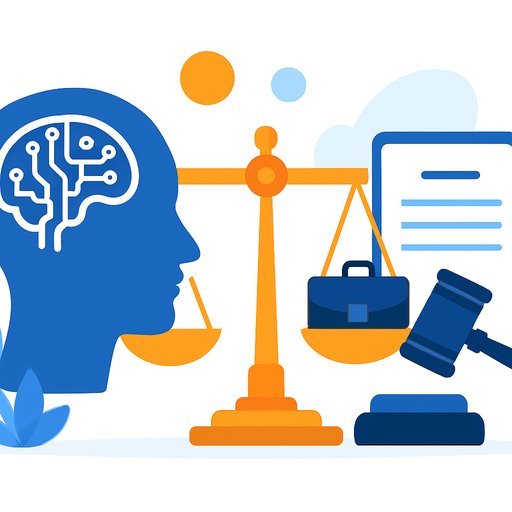YouTube's New Standards for Inauthentic Content and Creator Likeness: What Marketers Need to Do Now
YouTube can now detect whether a face, voice, or performance is AI-generated - even if the person never appeared in the video. The platform's 2025 updates make one thing clear: transparency is mandatory. Undisclosed AI isn't a creative shortcut. It's a compliance risk.
If your team touches creator likeness, voice clones, AI dubs, or synthetic edits, your workflow needs clear disclosure, verified consent, and proof of intent. Here's the playbook to stay compliant and keep distribution strong.
What Counts as "Inauthentic Content" in 2025
YouTube now groups deepfakes, voice clones, reenactments, and realistic AI edits under Inauthentic Content. If a real person appears to say or do something they didn't, and you don't disclose it, expect penalties.
This applies to creators, agencies, advertisers, and brands. Penalties can include limited ads, demonetization, age gates, reduced distribution, or removal.
Penalties are likely when content includes:- Undisclosed AI voice clones of real people
- Deepfake face swaps or realistic reenactments
- Fabricated gestures, statements, or performances
- AI-generated scenes placing real people at events they never attended
- Thumbnails/titles/metadata implying a real appearance when the footage is synthetic
Consistency matters. If a title or thumbnail suggests a real appearance but the video uses AI impersonation, YouTube treats it as inauthentic framing.
High-Risk Scenarios for Brands
Promotional content gets extra scrutiny. If a creator appears to endorse a product via AI likeness without clear disclosure and consent, you risk demonetization and suppression.
Voice cloning for localization is a common trap. If your AI dub mimics a creator's natural voice, disclose it on-screen, in the description, and via YouTube's AI label. If AI visuals exaggerate product effects, this can escalate to misleading commercial content - a harsher penalty category.
YouTube's Likeness Detection System
In 2025, YouTube expanded likeness detection across all YouTube Partner Program creators. The system scans visual, audio, and metadata to flag synthetic appearances and impersonations before monetization review.
- Compares frames, thumbnails, voice patterns, subtitles, and on-screen text to verified references
- Detects faces, voices, and gestures a creator never recorded
- Flags endorsements, opinions, or actions that don't exist in authentic footage
- Triggers on brief clips, still images, and short audio segments
Mandatory Participation and Studio Setup
Creators can't opt out. If detection triggers, videos may be placed into "limited ads" or "hold for review" until the creator confirms intent and disclosure. Suspected third-party impersonation can be routed to YouTube's Privacy Complaint process.
For higher accuracy, set up Identity & Likeness in YouTube Studio:
- Upload clear face images from multiple angles
- Add short voice reference clips
- Link verified social accounts
- Enable email/Studio alerts for likeness-related restrictions
Good references reduce false positives, especially if your videos use heavy editing, costumes, or filters.
Required Disclosures for AI-Altered or AI-Generated Content
If viewers could reasonably think a real person did or said something they didn't, you must use YouTube's AI label. For sponsored content, add on-screen disclosure and mirror it in the description and captions.
Use the AI label when your video includes:- AI voice clones of a real person (even a few seconds)
- Deepfake face swaps or realistic expression edits
- Synthetic performances (words/actions never recorded)
- AI scenes placing real creators into locations/events they never attended
- Localized AI dubs that recreate a creator's natural voice
On YouTube, the AI label appears on the watch page and in Shorts. Don't bury it.
AI Dubs, Revoicing, and Multilingual Versions
Disclosure is required if your dub mimics a creator's natural timbre or reconstructs performance (tone, cadence, emphasis), or if the creator never recorded the original. If the voice is obviously synthetic and not imitating a real person, disclosure is still recommended for clarity.
For best practice, pair YouTube's AI label with a brief on-screen note early in the video. This aligns with transparency principles highlighted in Google's Responsible AI guidance. See Google's perspective.
A 5-Step Pre-Flight Checklist to Avoid Penalties
- Consent proof: Keep signed approvals for face swaps, reenactments, voice clones, and AI-generated gestures. Add an "AI usage appendix" to talent contracts.
- Detection scans: Run third-party checks (e.g., Hive Moderation, Reality Defender, Intel's FakeCatcher) and save reports for appeals.
- Mirror disclosures: Use YouTube's AI label, on-screen text, spoken disclaimers (if voice is altered), and repeat in descriptions/captions.
- Dub safety: If a multilingual dub uses a creator's cloned voice, disclose. If neutral, still add a note for clarity.
- Truth in visuals: Ensure AI edits don't inflate product performance. If in doubt, strip the effect.
30-Day Implementation Plan for Marketing Teams
- Week 1: Audit where AI appears in your pipeline (scripting, B-roll, thumbnails, dubbing, voice cloning). Draft a one-page internal policy.
- Week 2: Update talent contracts with likeness/voice AI clauses. Set up Identity & Likeness in YouTube Studio for all on-camera talent.
- Week 3: Build disclosure templates (lower-thirds, captions, descriptions). Train editors, producers, and account managers.
- Week 4: Pilot third-party detection scans. Run a 10-20 video audit and fix any title/thumbnail-to-content mismatches.
Practical Disclosure Snippets You Can Copy
- On-screen (sponsored): "Portions of this video use AI to recreate [Name]'s voice/appearance with permission."
- Description: "Includes AI-generated likeness of [Name], disclosed under YouTube's synthetic media policy."
- Shorts caption: "AI-altered content. Details in description."
FAQ
How can creators keep AI-assisted workflows compliant?
Document each AI transformation and pair it with clear disclosure. Keep versioned proof of intent (scripts, prompts, tool settings) to speed up reviews and appeals.
Are AI-generated influencers treated like real-person likeness?
They require disclosures too. Don't imply a synthetic persona is a real person. Keep the distinction obvious in visuals and copy.
Can automated pipelines cause inauthentic framing?
Yes. Automation can push misleading thumbnails, titles, or edits. Add a manual QA step before upload and before ad approvals.
How should brands handle authenticity while scaling across channels?
Keep edits faithful to creator intent. Disclose any likeness alterations. Favor clear, consent-backed collaborations over flashy AI tricks.
Is AI curation safe when repurposing creator footage?
Yes, if it doesn't alter appearance, gestures, or voice in misleading ways. Curation tools that avoid likeness manipulation are lower risk.
What if a video seems suppressed due to perceived manipulation?
Check watch-time, retention dips, and traffic sources in Analytics. If you see a restriction, review disclosures, consent proofs, and submit an appeal with your documentation.
Key Takeaways for Marketers
- Transparency is non-negotiable. Label AI like you label sponsored content.
- Consent beats creativity disputes. Keep signed approvals and usage logs.
- Set up Identity & Likeness in Studio to reduce false positives.
- Use a pre-flight checklist and keep external scan results on file.
Further Learning for Marketing Teams
Need to uplevel your team's AI policy and disclosure skills? Explore focused training for marketing roles: AI Certification for Marketing Specialists. Or browse programs by role: Courses by Job.
Your membership also unlocks:






